v19n6 From the Editors
By Becky Lange, Janne Blichert-Toft, Sumit Chakraborty, Tom Sisson, and Esther Posner | December, 2023
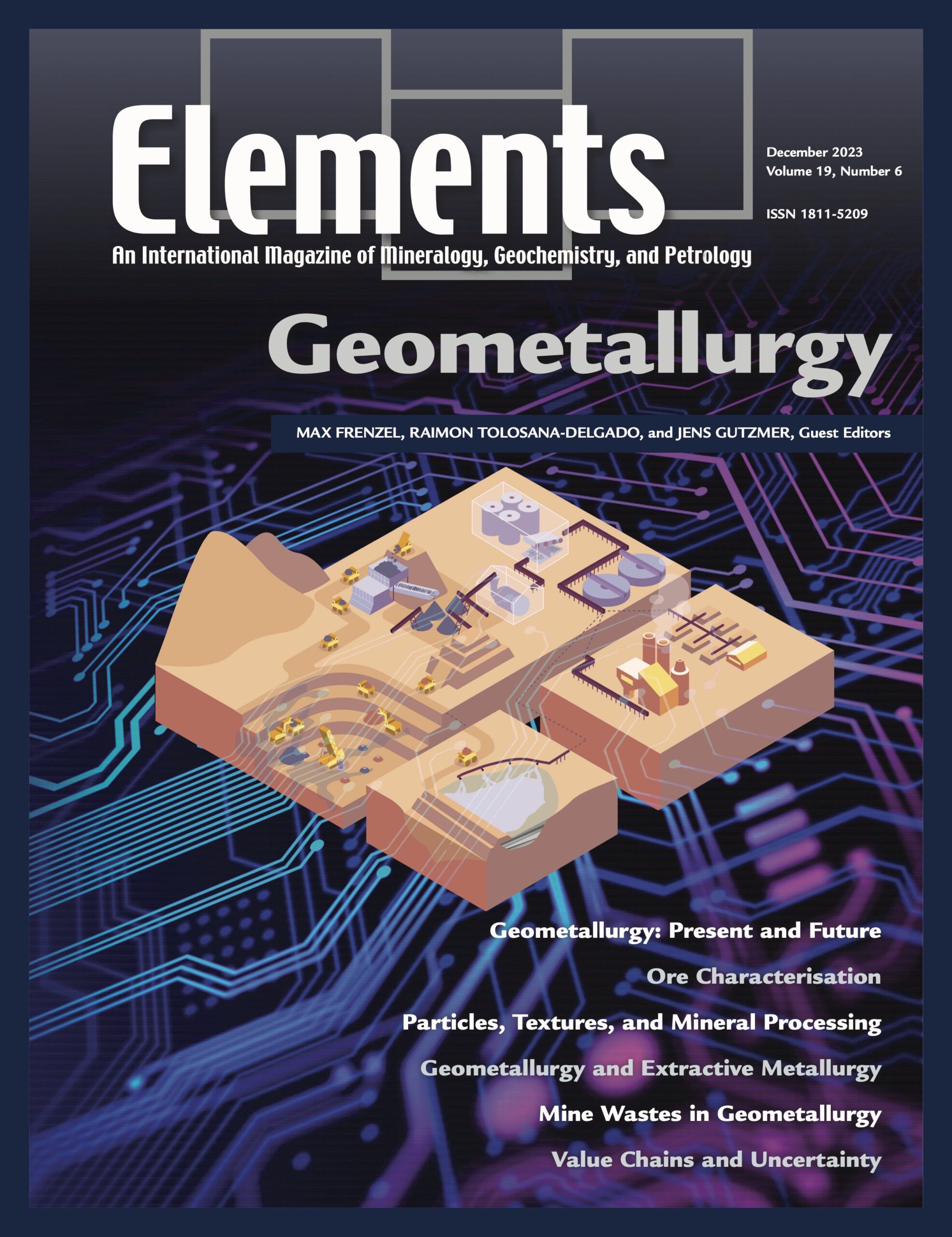
Initial discussions on the need to reduce global CO2 emissions focused mostly on the transition from fossil fuels to renewable energy sources. However, it has now become clear that large additional supplies of mineral resources—like copper, nickel, and lithium—will be required to build the energy systems of the future. Valid concerns have been raised about the sustainability of increasing production from a natural resource base marked by ever-decreasing metal contents and increasingly challenging environments. One major conclusion from this discussion is that the efficiency of raw material production must improve rapidly. We simply cannot afford to waste energy and resources in the face of quickly rising demand. This is where geometallurgy comes in—the topic of this Elements issue.
v19n5 From the Editors
By Becky Lange, Janne Blichert-Toft, Sumit Chakraborty, Tom Sisson, and Esther Posner | October, 2023
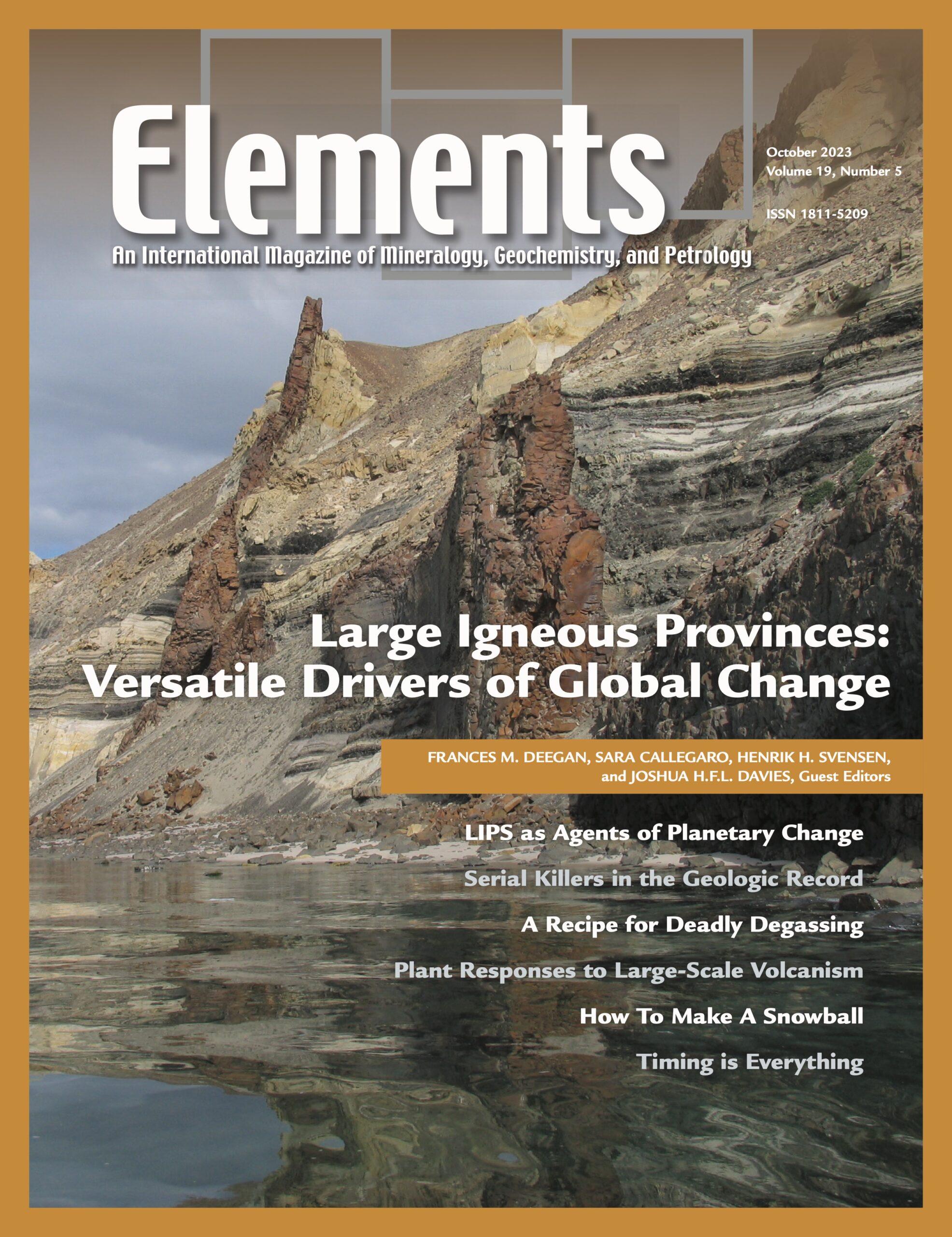
Earth’s history is punctuated by extraordinary magmatic events at a scale never witnessed by humans, known as large igneous provinces (LIPs). Many of these massive but geologically short-lived events induced global changes, including perturbations to the carbon, sulfur, and hydrological cycles, increased continental weathering, millennialscale warming, mass extinctions, oceanic anoxic events, and even glaciations. LIPs are therefore an enduring symbol of the interconnectedness of the whole Earth, from its deep interior to the crust to the atmosphere, ocean, and, ultimately, life. LIPs can also offer unique insight into the scale and impacts of large-scale volatile emissions that may, in some cases, mirror anthropogenic emissions. Questions surrounding why LIPs are such potent drivers of global change may not have unique answers, but they motivate much of the current research into LIPs. Collaboration across geoscientific disciplines is required to address these questions. In this issue of Elements, we bring together a diverse group of scientists to present the status of five key research themes that intersect with numerous branches of Earth science, including igneous and metamorphic petrology, palaeontology, climate science, and geochronology. Together, their articles highlight recent advances and provide fertile ground for discussing potential ways forward in LIP research.
v19n4 From the Editors
By Becky Lange, Janne Blichert-Toft, Sumit Chakraborty, Tom Sisson, and Esther Posner | August, 2023
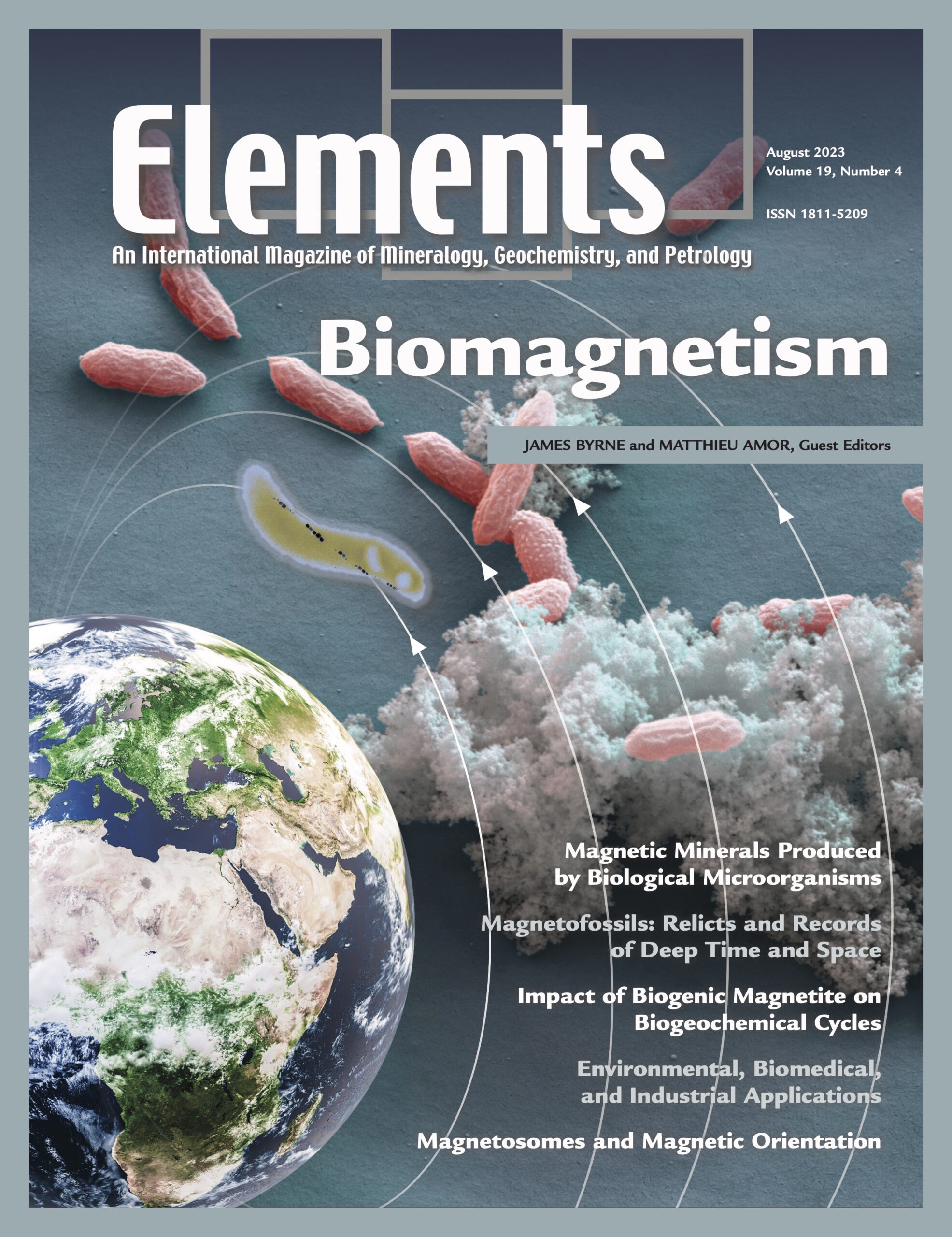
Many biological organisms possess the capability to produce crystalline structures from inorganic molecules. They include ferrimagnetic crystals made of iron-based magnetite or greigite, which can be precipitated in the environment by different bacteria. As a result, microorganisms can generate local magnetic fields and give rise to biomagnetism. Magnetotactic bacteria produce nanosized, intracellular, ferrimagnetic particles in a genetically controlled manner. The crystals align in chains, transforming the bacteria into small magnets presumably for optimizing their navigation along the geomagnetic field. Alternatively, iron-reducing and iron-oxidizing bacteria gain energy from metabolizing iron and can indirectly induce precipitation of magnetite extracellularly. Given the intriguing and complex origin of biological magnets, coupled to their magnetic properties and biological function(s), the field of microbial biomagnetism has attracted major interest for research in recent decades. Articles in this issue of Elements illustrate how distinct but complimentary scientific communities are addressing some important questions on biomagnetism including: how to identify biological magnetic minerals in the geological record to reconstruct the past microbial life; assessing the impact of biomagnetism on the biogeochemical cycling of iron and other chemical elements; engineering biomagnetism for biomedical and environmental applications; and understanding its evolution and association with higher organisms such as eukaryotes.
v19n3 From the Editors
By Richard Harrison, Becky Lange, Janne Blichert-Toft, Sumit Chakraborty and Esther Posner | June, 2023
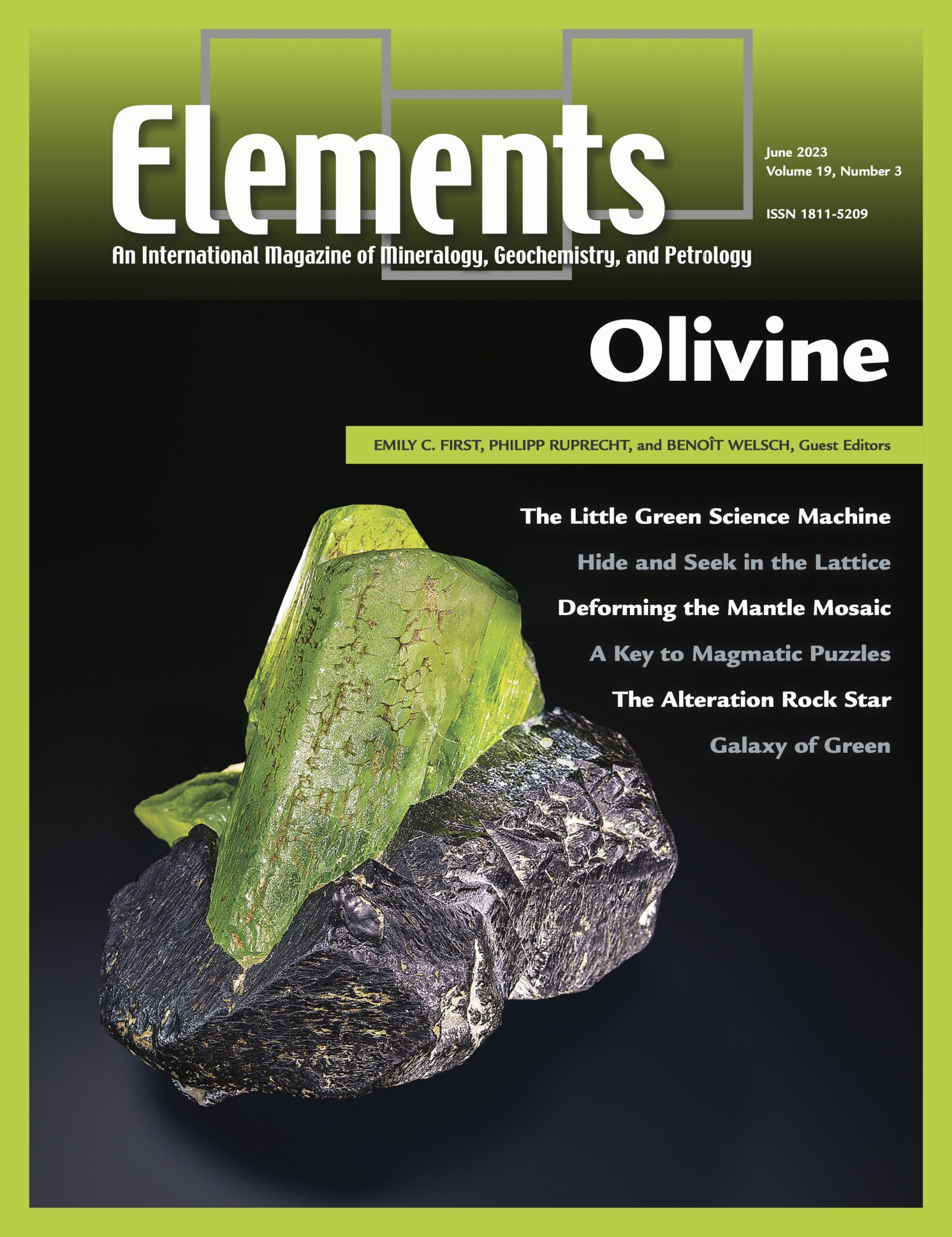
Chrysolite, topaz, peridot—the mineral we know as olivine has been called by many names, long prized through human history. But our lives are simply the latest blip in the olivine saga, going back to the birth and death of the stars themselves. Olivine occurs virtually everywhere on Earth, and across the galaxy. This mighty mineral is implicated in world-building and the emergence of life, and has modern applications in industry and society. Elegant in its chemical and structural simplicity, olivine has paved the way to a fundamental understanding of general mineral structures, chemistry, and mechanics. To study the Earth and other planetary bodies, we must understand olivine; when and where it forms, how it crystallizes and deforms, and how it responds to changing environmental conditions in the Earth’s interior, on the surface, and in space. Olivine drives plate tectonics, records magma transport and evolution beneath volcanoes, reveals how the Solar System evolved, and contributes to climate change mitigation efforts. In this issue of Elements, we bring together reviews from a diverse group of authors spanning seven countries, working in disciplines from seismology and geodynamics, to petrology and volcanology, to low-temperature geochemistry, to remote sensing. Their articles highlight olivine research that crosses these disciplines, from the atomic to galactic scale.
v19n2 From the Editors
By Richard Harrison, Becky Lange, Janne Blichert-Toft, and Esther Posner | April, 2023
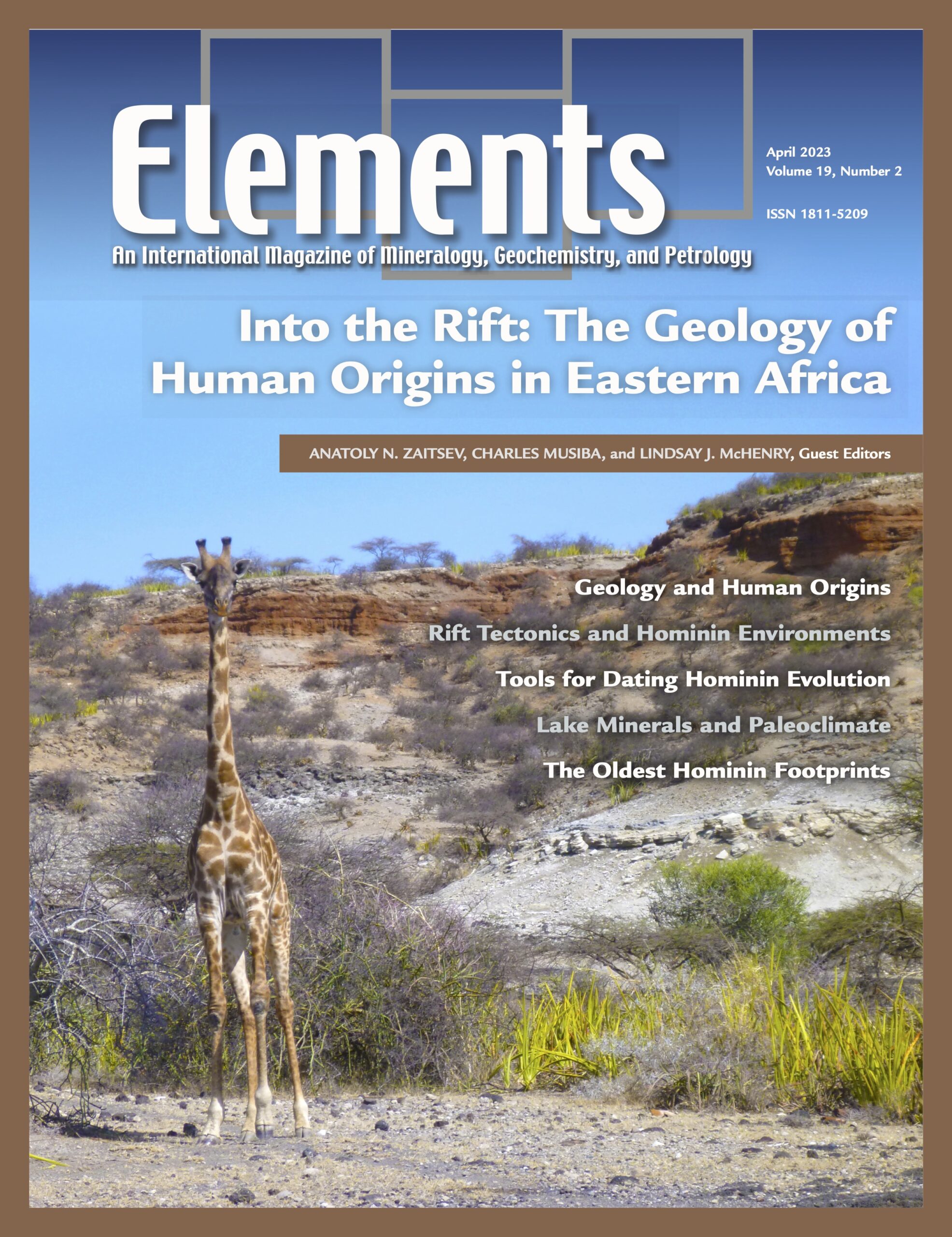
Spanning from the horn of Africa down to Lake Malawi, the Eastern African Rift System preserves a plethora of paleoanthropological sites that document our evolutionary journey spanning the last seven million years. Establishing the context for these discoveries over the past 80 years has been an increasingly interdisciplinary endeavor, involving international collaborations between paleoanthropologists, geologists, and specialists in many fields. This research is critical for the conservation of World Heritage Sites of human origins such as the Laetoli hominin footprint sites in the Ngorongoro Conservation Area of northern Tanzania. A common feature of major paleoanthropological localities in eastern Africa is that they are found within volcanic-sedimentary basins related to the evolution of the East African Rift. These evolving basins provided accommodation space for sediments and volcanic ash sourced from nearby rift volcanoes, which allowed for the rapid burial, cementation, and preservation of hominid and other animal remains, forming some of the world’s most prolific, best preserved, and most readily datable records of hominin evolution. Geological data, particularly field observations and precise age dating, help establish age relationships between different species of hominids. Authigenic minerals formed in rift lakes can help reconstruct past climate and the environments in which hominins evolved. This thematic issue explores the synergies between human paleontological and geological research and their contribution to our understanding of hominin diversification in eastern Africa.
v19n1 From the Editors
By Richard Harrison, Becky Lange, Janne Blichert-Toft, and Esther Posner | February, 2023
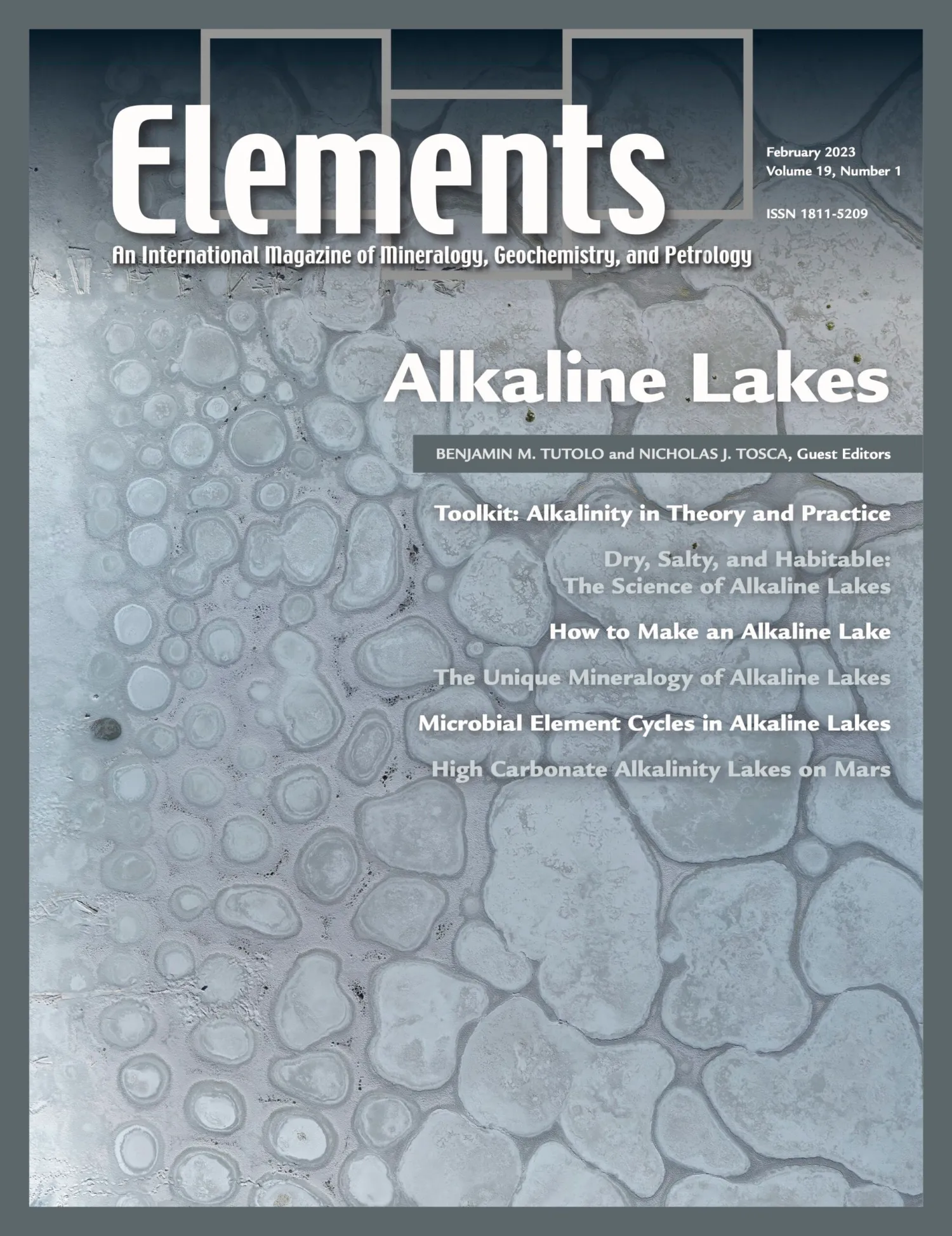
Alkaline lakes are incredibly dynamic, unique, and fascinating biogeochemical environments. In this issue, a multidisciplinary group of authors uses their diverse insights to portray alkaline lakes’ biogeochemical, mineralogical, and geological importance for both science and society. Across all articles, the approachable discussions of the geochemical, biological, and societal aspects of alkaline lake science seek to portray the characteristics of alkaline lakes that make them unique and stimulate continued explorations of these systems. The issue begins with a standalone Toolkit, designed to explain the fundamental but often misunderstood concept of alkalinity. From there, the individual articles explore the unique conditions leading to the formation of alkaline lakes, the distinctively productive and unique microbial ecosystems that inhabit them, their distinguishing chemistry and mineralogy, and their potential to have originated life on Earth as well as Mars. Together, the articles in this issue offer a well-rounded introduction to alkaline lakes. While such a collection could never encompass the breadth of knowledge associated with this field, each reader will undoubtedly find something to like and something that they hope to learn more about.

